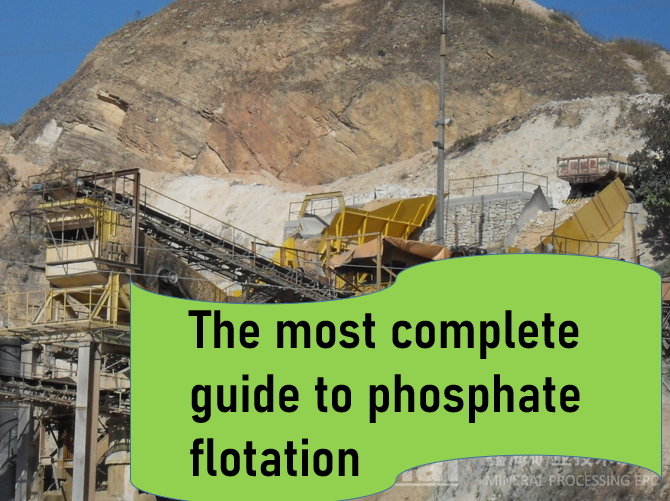The most complete guide to phosphate flotation
2024-07-31 Xinhai (1819)
2024-07-31 Xinhai (1819)
If you have any questions, please contact us through the following ways, we will give you more and better assistance!

Qualified phosphate concentrate can be obtained after one flotation of carbonate phosphate. The main structures of carbonate phosphate are spherulitic, sand, gravel, gel and bioclasts. Dolomite and quartz are closely combined with phosphate and wrapped with each other. There are also fine gangue in the phosphate aggregate, which makes it difficult to mechanically crush and dissociate the phosphate and gangue.
Single reverse flotation process is mainly used for the separation of phosphate and dolomite. Phosphoric acid and sulfuric acid are used as medium regulator and inhibitor respectively. We use fatty acid collector to float dolomite in weak acid medium, and the product in the tank is phosphate concentrate.
The single reverse flotation process is simple, the dosage of reagents is low, and the beneficiation cost is relatively low due to the influence of low temperature. However, this process can only remove phosphate gangue minerals, and it is difficult to obtain high-quality phosphate concentrate.
Qualified phosphate concentrate can be obtained after one positive treatment of siliceous phosphate. The gangue minerals of siliceous phosphate ore are mainly dolomite, quartz, chalcedony, etc. To obtain high-grade phosphate concentrate, we need to exclude siliceous minerals.
Direct flotation process is generally used to float low-grade phosphate ore, such as silicate and calcium silicate phosphate ore. This process must use inhibitors with strong inhibitory performance. We often use sodium carbonate and water glass as medium regulator and silicate inhibitor respectively. In addition, the use of fatty acid collectors to float phosphate ore can achieve better results.

Mixed phosphate ore often uses forward and reverse, reverse and double reverse flotation processes to obtain qualified phosphate concentrate.
The main industrial minerals of mixed phosphate ore are phosphate ore (fluoroapatite), and the gangue minerals are mainly carbonate minerals (dolomite, calcite), clay minerals (muscovite, sericite, kaolinite, potassium feldspar, sodium feldspar, quartz, chalcedony), iron-carbon minerals (pyrite, limonite, carbonaceous), etc.
Direct and reverse flotation process is an effective method for enriching low-grade phosphate ore. Generally, the process first uses sodium carbonate as a pH regulator and water glass as a silicate mineral inhibitor to float phosphate minerals in an alkaline medium. Then we use phosphoric acid and sulfuric acid as pH regulators and phosphate mineral inhibitors to float carbonates in a weakly acidic medium.
In the double reverse flotation process, we use phosphoric acid and sulfuric acid as pH regulators and phosphate mineral inhibitors, respectively, and use fatty acid collectors to float dolomite in an acidic medium. Then, sodium carbonate is used as a regulator and a cationic collector (i.e., an amine collector) is used to float silicate minerals in a weakly alkaline medium. The final product in the tank is a phosphate concentrate. The double reverse flotation process can be carried out at room temperature and under large particle size conditions.